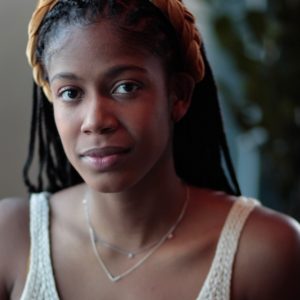For the past three summers, Living History’s TimeLine South has offered an ensemble of teenagers the opportunity to learn basic skills in theatre & performing arts from some of the most experienced and dynamic artists in the city. Through this six-week summer arts program, students engage in advocacy and community building through art as a way to illuminate some of their community’s toughest challenges and spark change. We understand that these topics can be difficult for young artists and we also believe that art can help heal and be an effective vehicle for social justice.
Although the COVID-19 pandemic has altered this year’s program, TimeLine South has been re-imagined as an online program, committed to the same goals of providing teens a safe space for self-expression, creativity, and ensemble building.
Each week, the 10 young people who make up the 2020 TimeLine South ensemble learn about a different facet of theatre with an expert. We’re featuring each of those members of the TimeLine South teaching team to give you a look at what this program is like and to let you sneak a peek behind the curtains at this transformative summer program. Today: acting instructor Am’Ber Montgomery!
“My introduction to the Arts as a theater artist was in a community much like the ones we hope to serve through this program. Learning about the power of my own voice and the kind of impact I had the ability to make in my community through art was invaluable.”

Tell us about what you’re teaching for TimeLine South. Why is it important now?
My introduction to the Arts as a theater artist was in a community much like the ones we hope to serve through this program. Learning about the power of my own voice and the kind of impact I had the ability to make in my community through art was invaluable. Providing space for teens to feel listened to and invested in will always be a priority for me.
As you know, adapting TimeLine South to be an online program has been a “work in process.” Can you talk a little bit about your process adapting your work to this new virtual program?
Teaching theater virtually is completely antithetical to how the art form was designed, so adapting to this virtual world has totally brought a new energy to the program. The challenging part has definitely been figuring out how to create an ensemble without being in the same room. The teaching artists and students have to be more present and engaging to keep up the momentum of the day. It’s a lot required from everyone involved, but I think we’ve all developed a huge amount of respect for one another in the process. Also, having to create lesson plans in consideration of people’s home environments and resources has really pushed our creativity. We’ve all learned so much about what’s possible and the importance of adaptability.
What’s a memorable moment you had during sessions last week? Why did it stick with you?
We played a lot of virtual games this week. It was so amazing to see how much fun the teens were having and how comfortable and creative they’ve all become over the past three weeks. They are all really starting to value being silly as a tool for authentically expressing themselves.
What do you hope this ensemble walks away with at the end of these six weeks?
I hope that they each feel more confident in their ability to create original content, and that they leave with a real value of the importance of sharing their personal stories.
